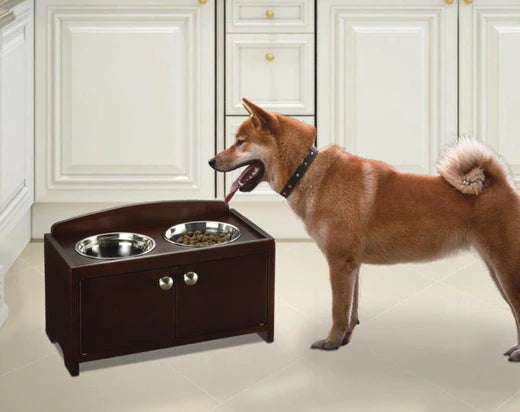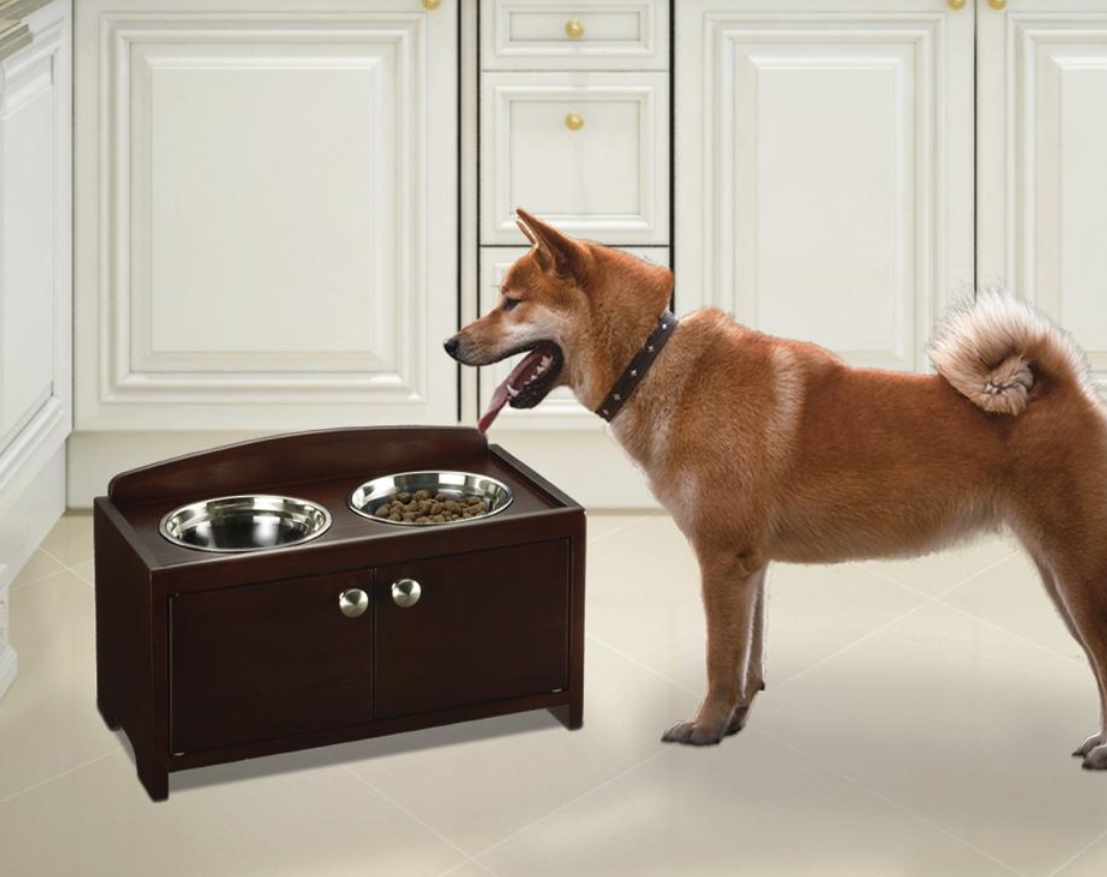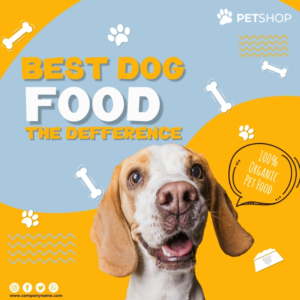Does the size of my pet’s bowl actually matter? Should it be raised off the ground? Will my cat drink more water out of an automated fountain? What size scoop should I use to feed my pet?
We take a scientific look at dog and cat feeding methods!
By petschoicesupply.com Featured Veterinarian,
Dr. Shadi Ireifej DVM DACVS
Co-founder and Chief Medical Officer at VetTriage

Introduction
Does the method by which you feed your dog matter? How about cats’ water intake? We will go over two canine studies and two feline studies looking into some variations in feeding and watering our most popular companion animals. And then we will discuss a common piece of advice spread among dog owners: feeding dogs with raised bowls.
Canine studies
A 2012 study compared dog owners scooping out a normal kibble-based meal using a small bowl and small scoop, a small bowl and large scoop, a large bowl and small scoop and a large bowl and large scoop. They found that the mean amount of food portioned using the small bowl and small scoop was significantly less than all other bowl and scoop combinations. They also found that dog owners were more likely to portion a larger amount of food with a large bowl and large scoop. Interestingly, these results were consistent with human data and emphasize the need for owners to use standard measuring cups. These results also suggest that owner compliance during weight loss programs may be improved with smaller bowls and serving scoops.
A 2019 study compared the total daily activity time, walking time and running time using food-dispensing devices versus regular bowls in a group of client-owned, primarily indoor dogs. They found that the food-dispensing devices increased the average daily total activity time by 12% and walking time by 26%. The average daily total activity time and walking time did actually reduce by 8% and 7%, respectively, with each increase in year of age. They concluded that food-dispensing devices may be helpful during weight loss programs to achieve the goal of increasing daily exercise duration in dogs that need to lose weight.
Interested in an automatic food-dispensing device? Check out the famous PetSafe Smart Feed for iOS and Android!
Feline studies
A 2010 study of healthy cats compared water intake to urine osmolality (concentration of all the particles in a fluid) and urine specific gravity (urine
concentration), both measured when water was offered from a bowl or water fountain. Water intake was slightly greater from the fountain. However, urine osmolality and concentration were not significantly different. Larger studies are needed, but it appears that the fountain maybe offers a slight advantage to entice cats to drink more water.
Finally, a 2019 study was performed to determine if the method of water presentation (still versus circulating versus free-falling bowl systems) influences daily water consumption in cats in a controlled environment, and whether differences in water intake affect urine relative super saturation for calcium oxalate and struvite (crystal formation), urine specific gravity (urine concentration), urine osmolality (concentration) and the urine volume. The most significant finding was that urine osmolality was significantly higher in circulating bowl systems compared with the other two types. Perhaps this means that still or free-falling bowl systems are preferred but more studies are needed. Interestingly, approximately 19% of cats demonstrated a significant water bowl preference!
Elevated feedings in dogs
Elevated feeding setups are generally accepted among dog owners because it minimizes the risk of accidentally inhaling food (possibly leading to aspiration pneumonia), possibly aids in food movement (via gravity on the esophagus), and eliminates neck strain.
For an example of an “elevated feeding” bowl setup, check out the Richell Wooden Feeder here at petschoicesupply.com:
Let’s compare some canine specific pathologies that may support these claims.
A normal dog should not having issues accidentally inhaling food. Examples include brachycephalic dogs. These are the adorable squished faced dogs; bulldogs, pit bulls, spaniels, pugs, etc. Because of inherent abnormalities in their airways, it may be a good idea to feed elevated. Aspiration pneumonia (food inhalation) prevention is vital for these dogs because of a higher risk to them given their anatomy.
Brachycephalic respiratory abnormalities – check out this video for more information:
Gravity-dependent aid in digestion is vital for those dogs with laryngeal disease or neuromuscular disease. The former is because they cannot protect their airway and the latter because without gravity food just falls right back out of their esophagus/mouth. An example of a laryngeal disease is laryngeal paralysis.
Laryngeal Paralysis YouTube video:
Any neuromuscular condition can affect the esophagus, but the most common one is megaesophagus. This is where the normal motility of the esophagus is lost and food needs to slide down via gravity. Causes, prognosis and treatment of megaesophagus is a discussion beyond the scope of this article. Keep in mind there are other causes of megaesophagus than only neuromuscular disease as well.
And finally, eliminating neck strain is important with dogs that have neck arthritis, disc herniations and so forth. Hopefully such dogs are also on multiple medications, supplements and other treatments in addition to an elevated dog bowl.
Oh look! More videos about this (featuring yours truly):
Canine spinal disease / back pain / pinched nerve / herniated disc video series:
Conclusion
For canine weight loss consider smaller bowls and serving scoops as well as food-dispensing devices. For improving hydration in cats, consider a water fountain, still bowl or free-falling bowl systems; basically whatever your cat likes best. And finally, feed your dog in an elevated position if you have a canine who is brachycephalic or has a disease of the swelling mechanism, esophagus or neck disease… or if you just want to. There is no harm in it.
References
Grant DC. Effect of water source on intake and urine concentration in healthy cats. J Feline Med Surg. 2010 Jun;12(6):431-4.
Murphy M, Lusby AL, Bartges JW, Kirk CA. Size of food bowl and scoop affects amount of food owners feed their dogs. J Anim Physiol Anim Nutr (Berl). 2012 Apr;96(2):237-41.
Robbins MT, Cline MG, Bartges JW, Felty E, Saker KE, Bastian R, Witzel AL. Quantified water intake in laboratory cats from still, free-falling and circulating water bowls, and its effects on selected urinary parameters. J Feline Med Surg. 2019 Aug;21(8):682-690.
Su DK, Murphy M, Hand A, Zhu X, Witzel-Rollins A. Impact of feeding method on overall activity of indoor, client-owned dogs. J Small Anim Pract. 2019 Jul;60(7):438-443.

About Dr. Shadi Ireifej:
Dr. Shadi Ireifej DVM DACVS is the Chief Medical Officer at VetTriage. He holds degrees from SUNY Binghamton and Cornell University and has practiced as a veterinary surgeon all across the United States. Follow him on Instagram @dr.shadi.ireifej and subscribe to his YouTube channel (Dr. Shadi Ireifej).
About VetTriage:
VetTriage is the world’s foremost provider of veterinary telehealth services. With VetTriage, pet owners have immediate access to triage advice from licensed veterinarians. Follow them on Instagram @vettriage and Facebook (facebook.com/televeterinarian).




